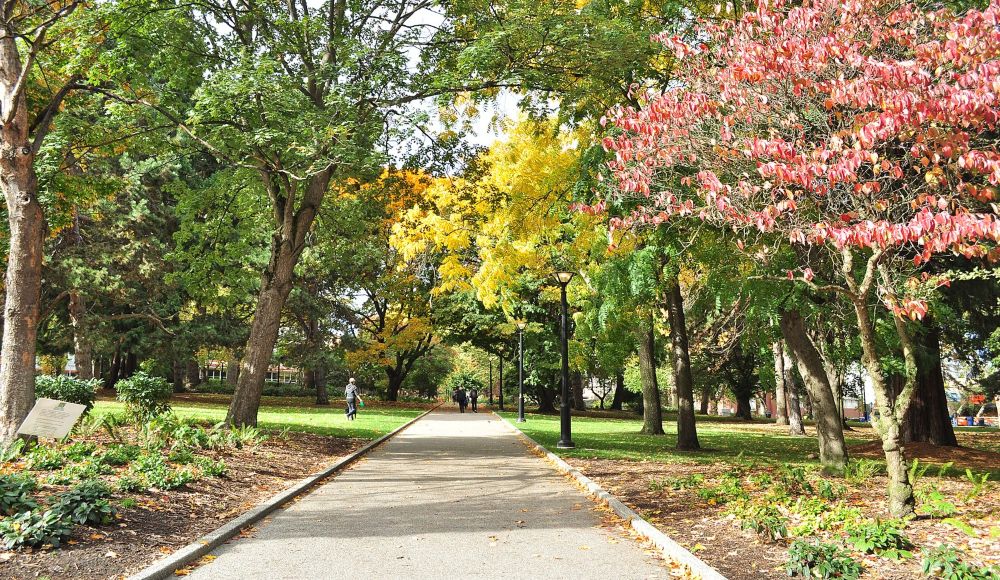Signs of early Spring are upon us, beckoning us to public spaces in Washington and its state, county, and municipal parks.
Some of our State Parks mark gravesites such as Chief Sealth in Suquamish and the nearby Old Man House. They also draw us onto the Steptoe Battlefield in Eastern Washington, Fort Columbia at the mouth of the Columbia River, English Camp on San Juan Island (site of the infamous and mis-named “Pig War”), and the Native Painted Rocks near Spokane. These sites employ archeologists, historians, and artists who recount a facet of our rich past while shaping places to relax.
Frederick Law Olmsted, Sr. (1822-1903), landscape designer of the 1893 Columbian Exposition in Chicago and New York’s Central and Prospect Parks, placed an indelible stamp on U.S. history. Olmsted’s adopted son and nephew, Frederick Olmsted Jr. and his half-brother John C. Olmsted of Brookline, Massachusetts, were hired by the City of Seattle in 1902 to develop a “comprehensive system of parks and parkways” in anticipation of the 1909 Alaska-Yukon-Pacific Exhibition on the University of Washington campus.
The younger Olmsted’s recommendations were far-reaching: city-wide playgrounds, Alki bathing beach, Green Lake Boulevard, Madison and Madrona Parks, the Arboretum, and Woodland Park. Most of his suggested 75 parks and other sites were to be connected by boulevards that preserved views and emphasized our region’s lush vegetation and outward views to water and mountains.
Congress has since passed legislation (The Olmsted Historical Landscape Act) to identify and preserve the Olmsted landscape legacy – father, son, and associates. Seattle joined that effort with the formation of Friends of Seattle’s Olmsted Parks.
Each of the Olmsted parks which preceded his 1902 survey, such as Seattle’s first park (Denny Park on Denny Way) include an aspect of local history. For example, neighborhoods were often built to attract a certain home-buying clientele, and conformed to a local park (such as the series of parks and beaches in Madrona/Denny Blaine). Many of these flowered, verdant refuges display a plaque describing who passed here and what happened at this location. Most of these sites were built and enhanced by workers hired during our Depression-era Federal Parks Programs of 1932-1941. And the Seattle Olmsted plan itself encouraged Seattle citizens to pass bond issues in support of urban park and recreation sites.
From a grand Washington state roster, I mention a couple of favorites. For a rural experience, take a look at the charming and forested Kitsap Memorial Park on Highway 3 just south of the Hood Canal Bridge. It faces the saw-toothed Olympic Mountains and the ever-changing oyster beds of the Canal. For a small-town adventure-in-parks, drive to historic Port Townsend and proceed up the hill to Chetzemoka Park, named for a Native chief (called “Duke of York” by white settlers) and gaze at the Strait of Juan de Fuca, Whidbey Island’s western cliffs and the outlines of Victoria, British Columbia.
Discover more from Post Alley
Subscribe to get the latest posts sent to your email.

I regret that I didn’t read this article in early spring. I’ve returned from Seward Park and found this, while searching for something else. A great write.
Knowing that our park refuges were built by Depression-era workers makes them even more “the people’s parks.”
Regarding Chetzemoka Park in Port Townsend with its view of the beautiful Strait of Juan De Luca. Thank God, at least one park has a name honoring a Native chief. Too few of our parks do. Enjoyed this!